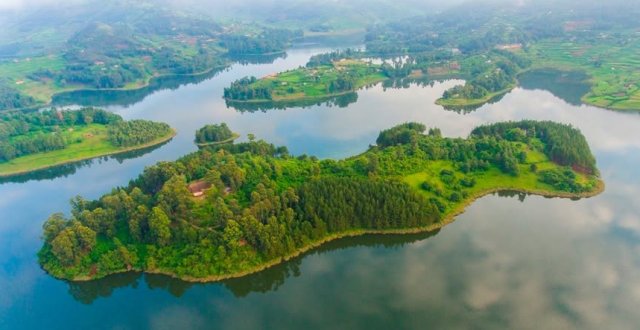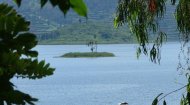
|
Kyahugye Island Guide |
Kyahugye Island Guide |
Kyahugye Island Guide | Kyahugye Island Guide |
All about the beautiful Lake Bunyonyi, its tourist attractions, things to do and places to stay.
More >
|
|

The island’s management has carefully reintroduced a selection of plains game such as zebras, impalas, waterbucks, and Ugandan kob, creating a closed, controlled environment where these animals can thrive safely, protected from mainland pressures like poaching and extensive human settlement, transforming the dense lakeside terrain into a miniature terrestrial reserve. Nature walks, birdwatching trails traversing the highlands, and guided tours further enhance the island’s novel ecosystem, while the available accommodation is designed to be rustic yet comfortable, emphasising minimal environmental impact, maximising the immersion in the tranquil environment. The revenue generated through this unique game viewing and residential experience directly funds the protection of the island’s delicate plant life and helps support local projects, showcasing a circular economy model where conservation fuels tourism, which in turn financially supports more conservation. It serves as a living, albeit manufactured, laboratory for observing animal-environment interactions in an isolated setting. The philosophy underpinning the island’s operation is focused on sustainable conservation. Management protocols strictly limit the number of daily visitors and ensure that all development is ecologically sensitive, utilising local materials and minimising waste. The island also serves as an important site for environmental education, offering interpretive centres that explain the geological formation of the lake and the necessity of preserving the fragile montane ecosystem surrounding it. This educational element is vital for fostering local stewardship, demonstrating practically how a protected natural area can yield consistent social and economic benefits, and combating the short-term economic pressures that often lead to environmental degradation in other regions. Looking toward the future, the focus for Kyahugye Island remains firmly on enhancing sustainability while broadening the scope of cultural engagement. There are ongoing proposals to deepen the relationship with the neighbouring communities, employing more local guides and sourcing consumables directly from the mainland villages to ensure that the economic benefits are widely distributed. Furthermore, the island intends to expand its reforestation efforts, focusing on indigenous tree species to enhance the natural habitat for native small mammals and the vast array of birds that give Bunyonyi its name. There is also discussion about expanding the interpretive trail system to highlight the historical paths and potential archaeological sites that lend context to the island’s quiet past, integrating the environmental story with the human narrative of the region. |









